Trees with purple flowers are a wonderful way to add more beauty and appeal to your garden setting. Purple-flowering trees can improve the aesthetic appeal of your outdoor space, regardless of how big or small your backyard is. There is a range to meet every need, from big shade trees that are wonderful for shielding a patio or lawn from the summer sun to little ornamental trees that are ideal for tiny yards.
Mountain laurels, chaste trees, redbuds, and magnolias are some of the best options for trees with purple flowers. These trees have gorgeous purple blossoms, but they also have luxuriant foliage that changes to vivid orange, yellow, purple, and red in the fall.
We’ll present you with an identification guide in this post to assist you in identifying and choosing the ideal trees with purple flowers to enhance your landscape or garden. Detailed descriptions and pictures of several purple-flowering tree species will help you make well-informed judgments to improve the aesthetics of your outdoor area.
Different Types of Trees with Purple Flowers
Jane Magnolia Tree
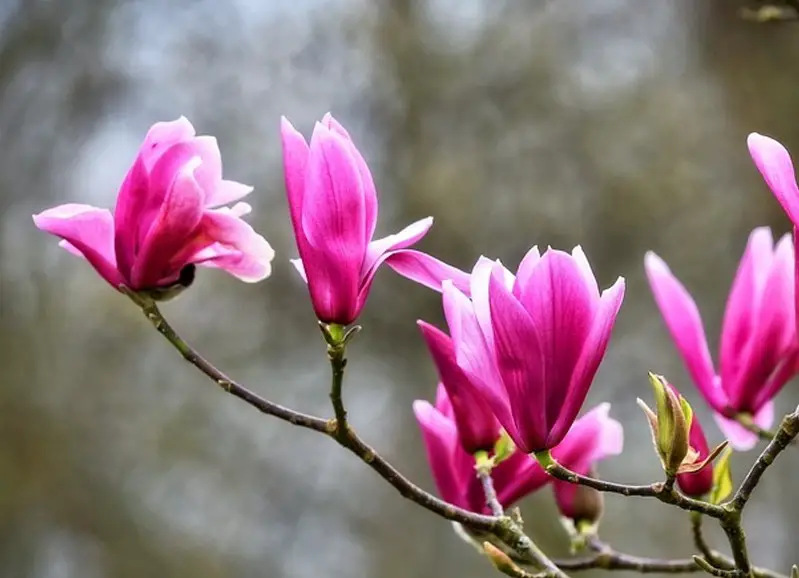
The Jane Magnolia (Magnolia x ‘Jane’) is a versatile and hardy tree ideal for small yards, featuring stunning reddish-purple, tulip-shaped blooms with white centers in late spring. It grows to a mature height of 10–15 feet and a width of 8–10 feet, thriving in full sun but appreciating afternoon shade in hot climates.
This compact tree avoids frost damage by blooming later and offers attractive copper-yellow foliage in the fall, making it perfect as a privacy hedge or specimen plant.
Jacaranda Tree
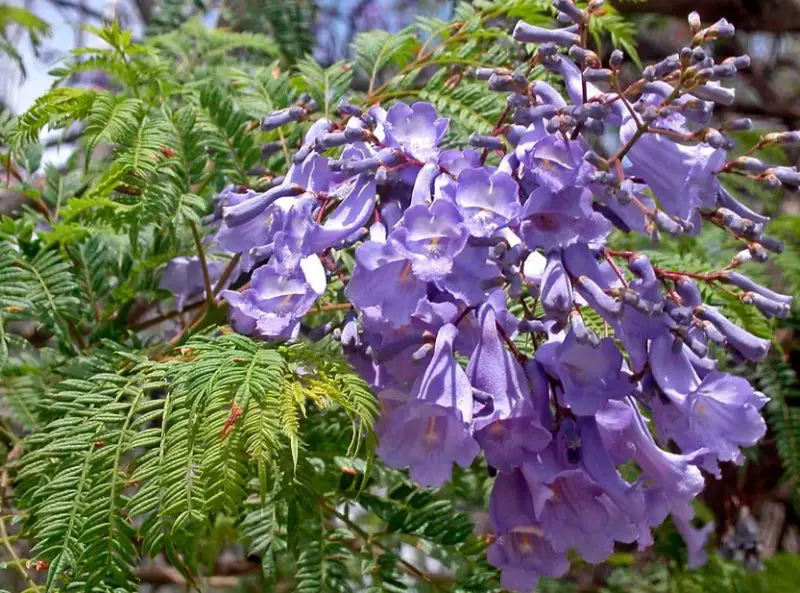
The Jacaranda tree, or Jacaranda mimosifolia, is well-known for its breathtaking purple spring blossoms, which change to vivid yellow in the fall. This drought-tolerant, quickly-growing tree improves landscapes with its striking profile and foliage that resembles ferns.
Gorgeous clusters of lavender flowers make a dramatic impression, and as the blooms fall, a distinctive lilac carpet appears. It grows well in full sun and reaches a mature height of 25–50 feet and a width of 15–30 feet.
Profusion Crabapple
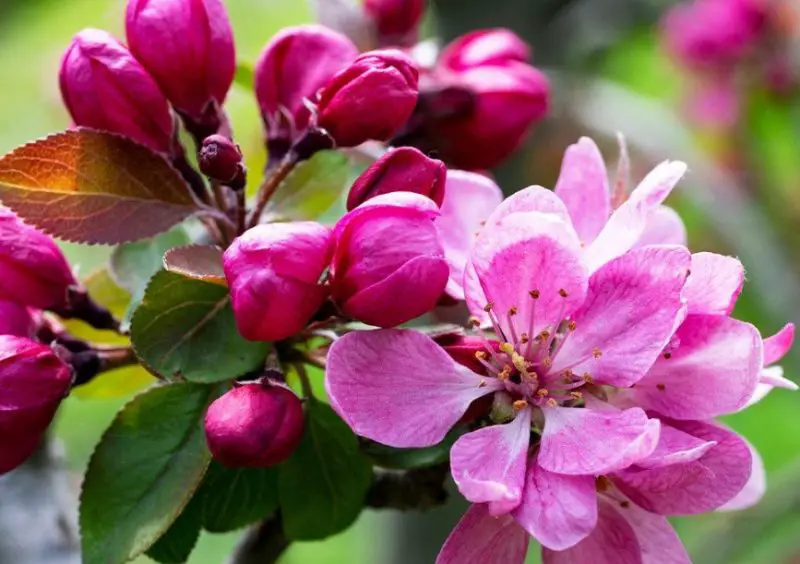
Malus ‘Profusion,’ the scientific name for the Profusion Crabapple, is a medium-growing tree that may be grown in USDA zones 4–8. Mature foliage reaches heights of 18–24 feet and widths of 20–25 feet. Bright red flowers with dark pink/purple centers appear in early spring.
It offers bronzed green summer leaves and harvest gold in the fall as it changes with the seasons. It is ideal for contemporary yards, street trees, and landscapes looking for year-round color and intrigue because it is disease-resistant, hardy, low-maintenance, and versatile.
Bubba Desert Willow
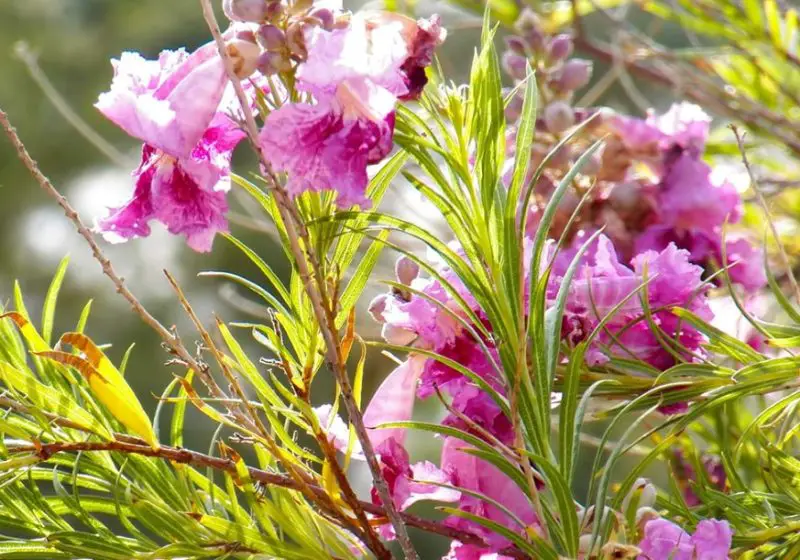
Chilopsis linearis ‘Bubba,’ the scientific name for the Bubba Desert Willow, is a native tree that grows medium-fast and is appropriate for USDA zones 5 through 9. Grows to a mature height of thirty feet and a width of twenty to thirty feet. It has stunning purple flowers from summer to fall.
It thrives in full sun and is drought-tolerant, making it ideal for making hedges or screens in challenging environments. It draws in beneficial pollinators with its huge, trumpet-shaped, bicolored blooms and provides year-round appeal with its willow-like foliage, thin branches, twisted trunks, and exfoliating bark.
Thunderstruck™ Lavender Blast™ Crape Myrtle Tree
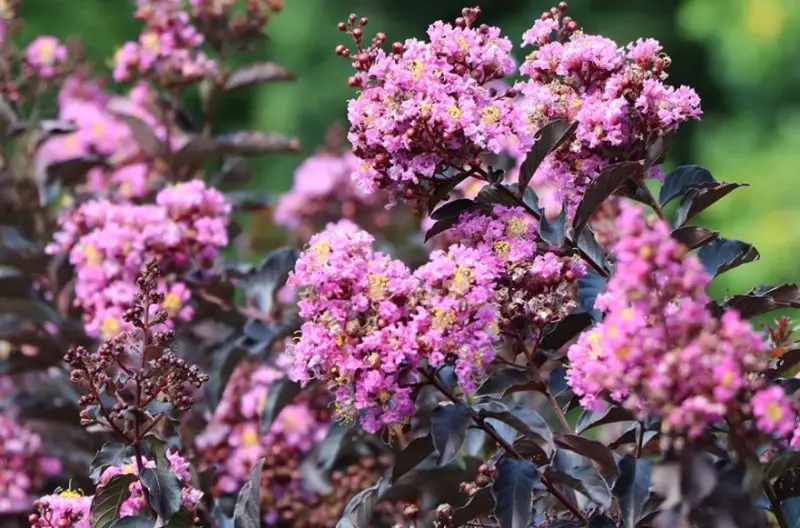
Known scientifically as Lagerstroemia x ‘JM3’ PPAF, the ThunderstruckTM Lavender BlastTM Crape Myrtle Tree grows quickly and is best suited for USDA zones 6–10. It grows to a mature height of 12–15 feet and a width of 8–12 feet. From early summer until the first frost, it has beautiful lavender blossoms. Its eye-catching glossy black leaves are sure to draw attention and infuse any garden with vibrant color.
It’s the ideal option for compact gardens because it can withstand drought and requires almost no maintenance. It will make your landscape stand out with its striking color scheme and lush growth.
Miss Kim Lilac Tree
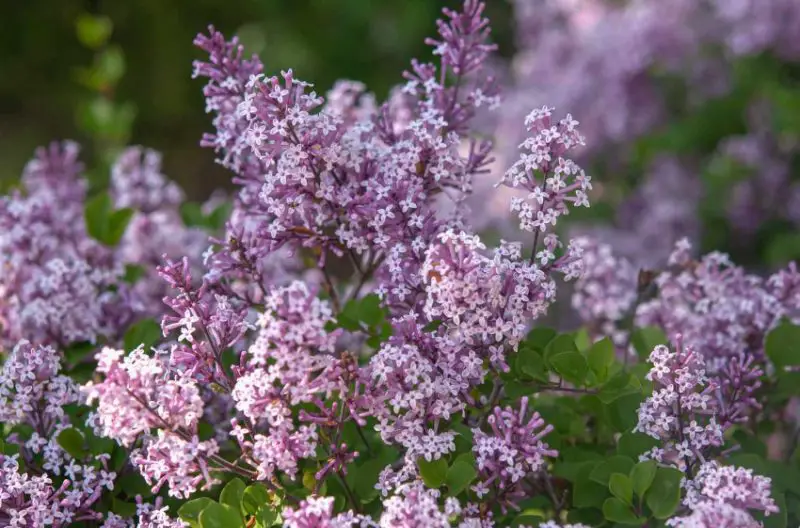
Syringa patula ‘Miss Kim,’ as it is scientifically called, is the slow-growing, gorgeous Miss Kim Lilac Tree, which grows best in USDA zones 3–8. It grows to a mature height and breadth of 6 to 8 feet, and in May it produces lavender-blue flowers that change to pale pink in the summer.
It’s ideal for garden or container settings with full to partial sun, adding an aromatic presence near entrances or forming an attractive, fragrant screen. Its leaves ensure continuous beauty throughout the seasons, with a dramatic dark purple color in the fall.
Hong Kong Orchid Tree
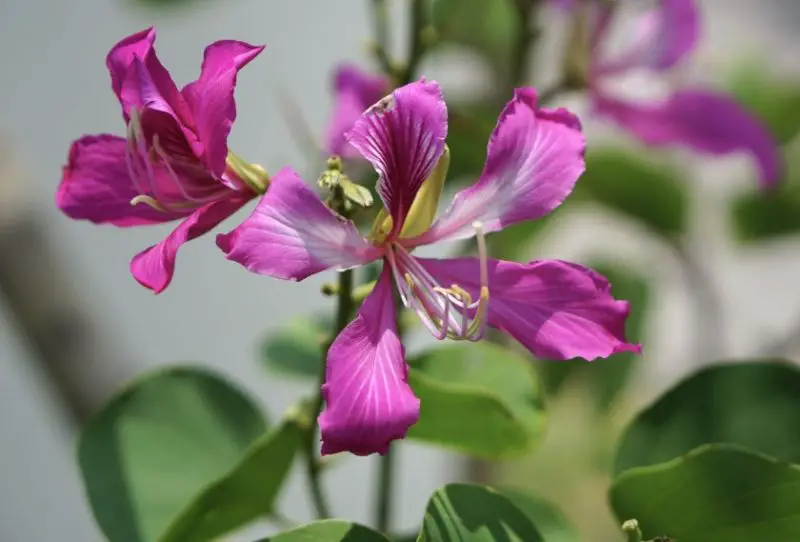
USDA zones 3–8 are ideal for the graceful, slowly growing Bauhinia x blakeana, also known as the Hong Kong Orchid Tree. It can grow up to 8 feet wide and tall, and it prefers full to partial sun. Its lavender-blue blooms in May that change to a pale pink in the summer lend an air of sophistication to any environment. It provides a year-round display of splendor, making it ideal for gardens or container settings.
Ardens Rose of Sharon Althea Shrub
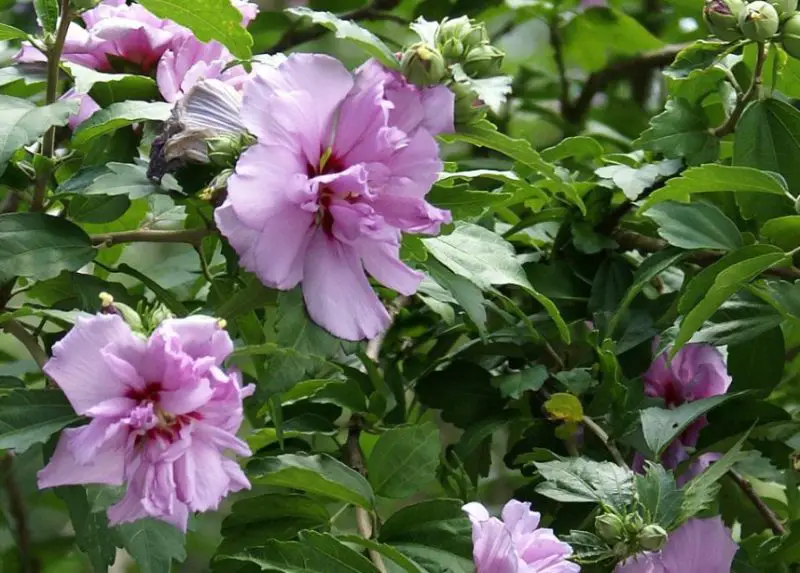
Hibiscus syriacus ‘Ardens,’ the technical name for the Ardens Rose of Sharon Althea Shrub, is a medium-growing beauty that grows best in USDA zones 5 through 9. It can grow to a mature height of 8–12 feet and a width of 6–8 feet. It prefers full sun to light shade.
From midsummer to October, it produces lavender flowers that attract hummingbirds, butterflies, and bees. With its long life of up to 40 years and its hardiness and adaptability, it’s an eye-catching yet low-maintenance option for any landscape.
Red Pixie Lilac Tree
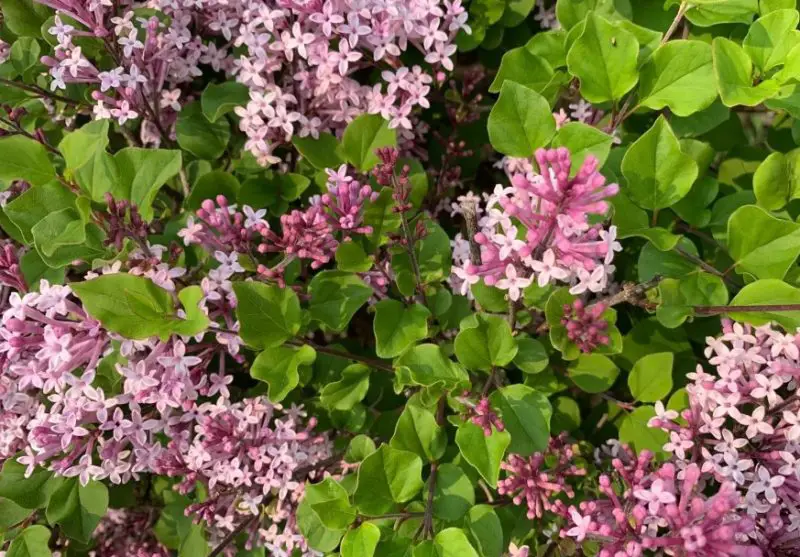
Syringa ‘Red Pixie,’ as it is scientifically called, is the Red Pixie Lilac Tree, a gorgeous, moderate-growing tree that grows well in USDA zones 3–7. When fully grown, it reaches a height of 6-7 feet and a width of 3–4 feet. It grows best in full or partial sun.
It brings vitality to any garden with its scented red-pink blossoms in late spring and potential for reblooming in summer and early fall. It is ideal for smaller gardens because of its compact, dwarf size and erect, rounded growth, which ensures visual impact without taking up much room.
Autumn Royalty® Encore® Azalea
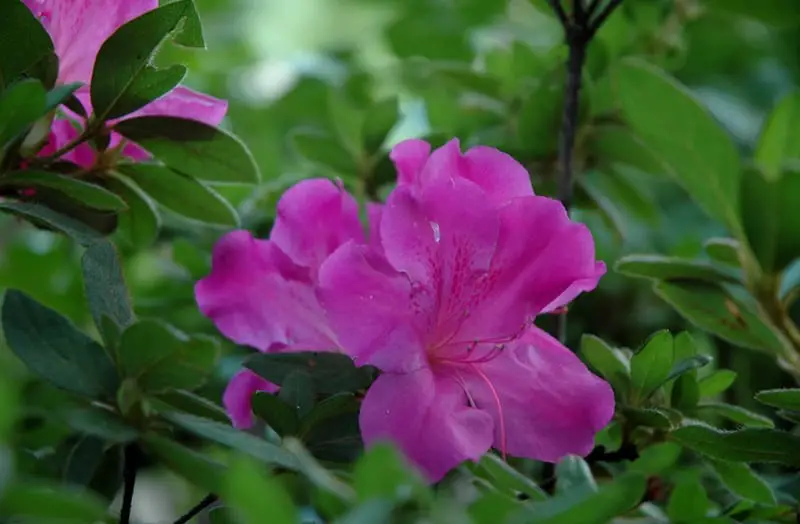
USDA zones 6–9 are ideal for the sturdy and quickly growing Rhododendron ‘Conlec,’ also known by its scientific name, Autumn Royalty Encore® Azalea. When fully grown, it reaches a height of 4-5 feet and a width of 3-4 feet. It grows best in full sun or medium shade.
Its vivid lavender-purple blossoms, which appear in early spring, midsummer, and fall, give any landscape a striking pop of color. Awarded “Rhododendron of the Year,” this plant is ideal for bulk plantings, hedges, or as a spectacular specimen plant since it attracts hummingbirds and butterflies.
Lavender Rhododendron Shrub
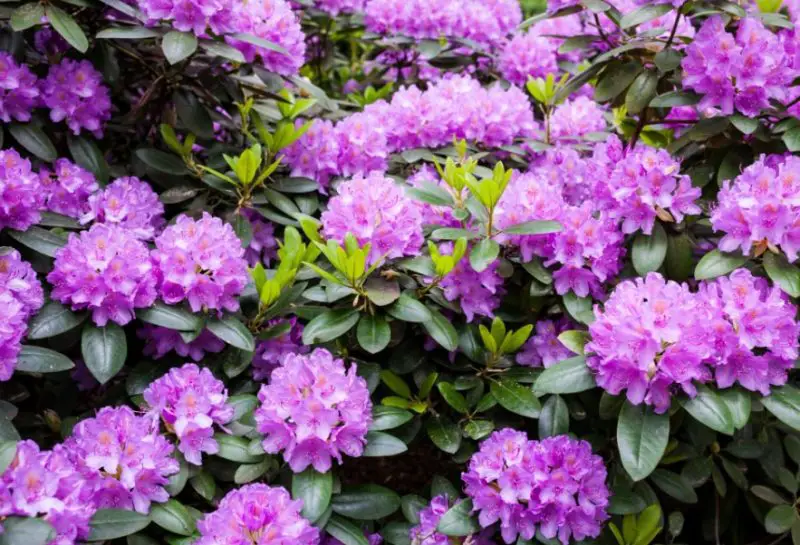
USDA zones 4–8 are ideal for the lavender rhododendron shrub, Rhododendron catawbiense in its formal name. It grows to a moderate height. It grows to a mature height and breadth of 6 to 10 feet, and it prefers full to partial sun.
It gives a striking display to any landscape in the spring with its spectacular clusters of bright lavender flowers. Praise for its glossy leaf and attractiveness from the National Arbor Day Foundation, it is a drought-tolerant and adaptive plant. Its rounded growth habit makes it ideal as a solitary specimen or in group plantings.
Muskogee Crape Myrtle Tree
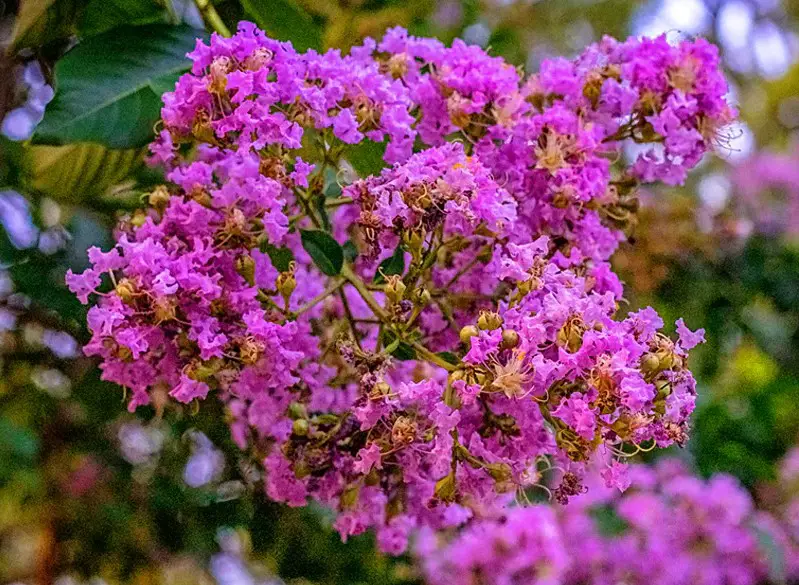
USDA zones 6–9 are ideal for the moderately growing Muskogee Crape Myrtle Tree, scientifically known as Lagerstroemia indica x fauriei ‘Muskogee’. It grows well in full light, reaching a mature height of 20–30 feet and width of 10–15 feet. Impressive display of beautiful lavender-purple flowers that persist up to six months.
It grows quickly, is versatile, resistant to drought and powdery mildew, and does best in humid environments. Fast growth and brilliant color are guaranteed, and it offers a variety of landscape possibilities.
Ace of Hearts Redbud
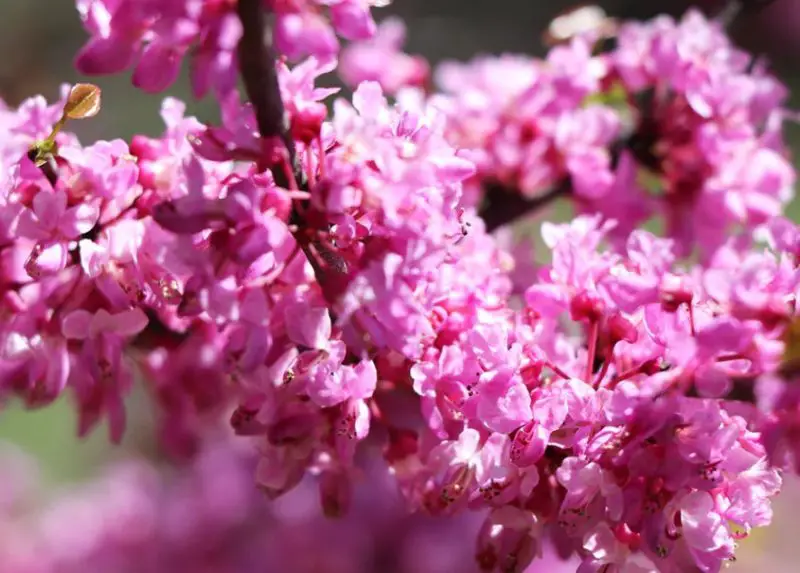
The Ace of Hearts Redbud, scientifically known as Cercis canadensis ‘Ace of Hearts’, is a medium-growing beauty suited for USDA zones 5–9. Reaching a mature height and width of 12–15 feet, it thrives in full sun to partial shade.
With magenta, pea-shaped buds in spring, it bursts into bloom, followed by heart-shaped, light green foliage turning bright yellow in fall. Easy-to-care-for and a magnet for beneficial pollinators, it’s an excellent specimen tree, adding vibrant hues to any landscape.
Genie Magnolia Tree
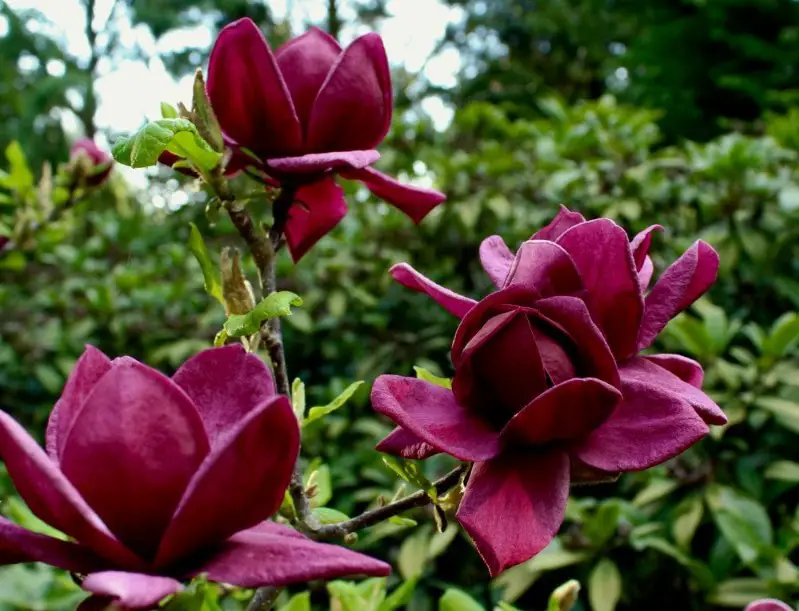
With a mature height of ten feet and a width of five feet, the Genie Magnolia Tree, scientifically known as Magnolia x ‘Genie,’ grows best in USDA zones 5 through 9. It is ideal for small gardens due to its compact, columnar structure and slow growth rate. Rich maroon-purple blossoms are a feature of this frost-resistant cultivar that makes for a beautiful spring show, and it may bloom again later in the season.
Whether planted in the ground or in big containers, its glossy foliage, easy care qualities, and consistent flowering performance make it a stunning addition to any landscape.
Alley Cat Redbud
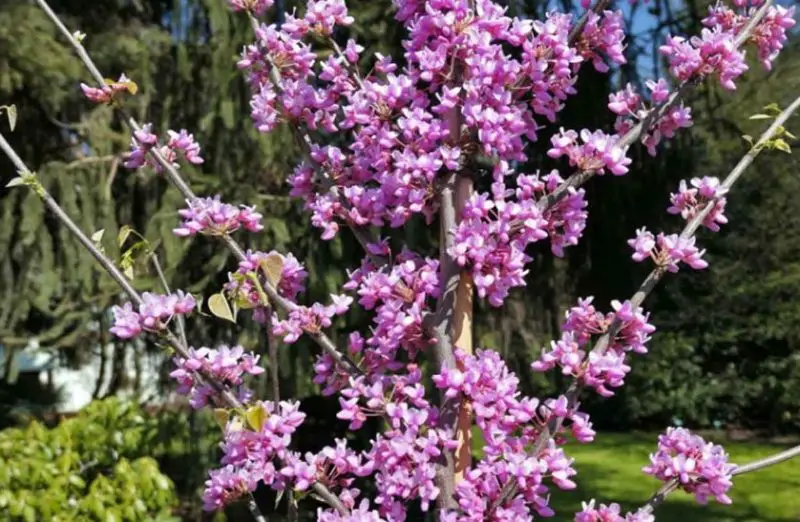
USDA zones 5–9 are ideal for the Alley Cat Redbud, also known by its botanical name, Cercis canadensis “Alley Cat.” This medium-growing tree matures to a height of twenty feet and a width of thirty feet. It dazzles with unusual variegated leaves that begin dark pink and turn green and white, as well as electrifying purple-pink blossoms that appear in the early spring.
The Alley Cat Redbud is a disease- and heat-resistant plant that looks good year-round and adds interest to winter landscapes in full sun to moderate shade.
Galaxy Magnolia
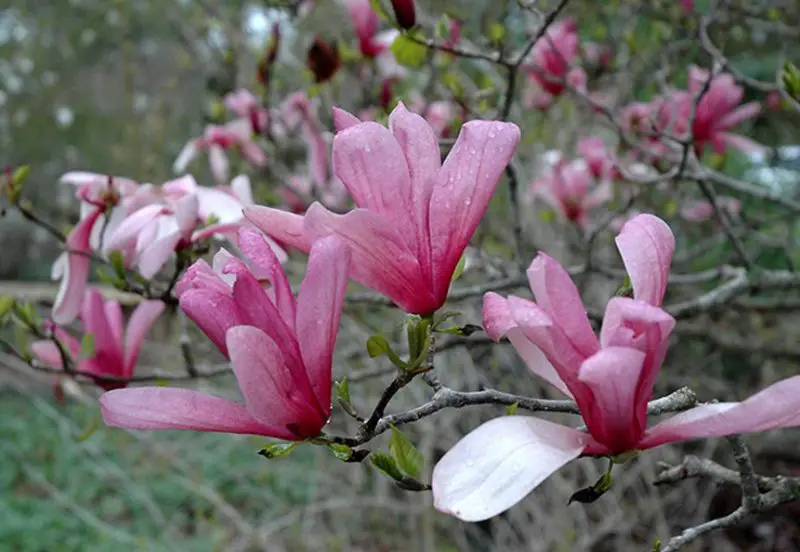
Magnolia x ‘Galaxy,’ often known as the Galaxy Magnolia, is a plant that grows best in USDA zones 5–9. This tree grows to a mature height of thirty to thirty-five feet and a width of fifteen to twenty feet. Its gorgeous rose-purple flowers emerge from its deep purple buds later in the season to prevent frost damage.
The Galaxy Magnolia is a valued addition to any garden due to its exceptional blossom color and resilience. It is perfect for small spaces because of its compact, spreading canopy and sturdy branches.
Royal Purple Smoke Tree
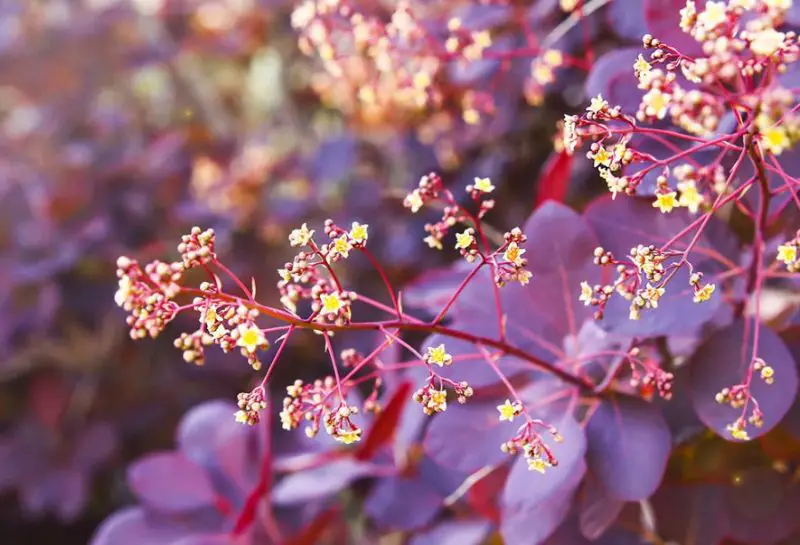
USDA zones 5 through 9 are ideal for the Royal Purple Smoke Tree, scientifically known as Cotinus coggygria. This tree, which matures to a height of 10-15 feet and a width of 12–15 feet, has gorgeous purplish-red foliage and distinctive purple blossoms that resemble smoke. It thrives in a range of soil types and environmental circumstances, including drought.
Its foliage changes from spring to fall and turns scarlet in the fall. It blends remarkable beauty and ease of care, making it perfect for a variety of landscapes.
Black Diamond® Crape Myrtle – Purely Purple™
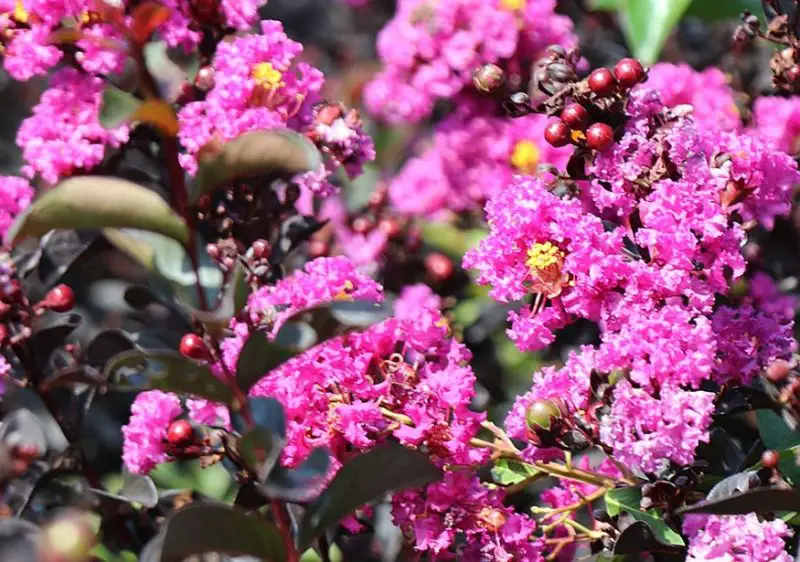
USDA zones 6–10 are ideal for the Black Diamond® Purely PurpleTM Crape Myrtle, botanically known as Lagerstroemia indica. It grows to a height of 10–12 feet and a width of 6–8 feet at a moderate rate. This cultivar contrasts dramatic black foliage with vivid purple blossoms that flash from spring to summer.
It adds a strong show of color with minimal maintenance and is ideal for pots or small gardens because it is mildew- and drought-tolerant.
Vitex Chaste Tree
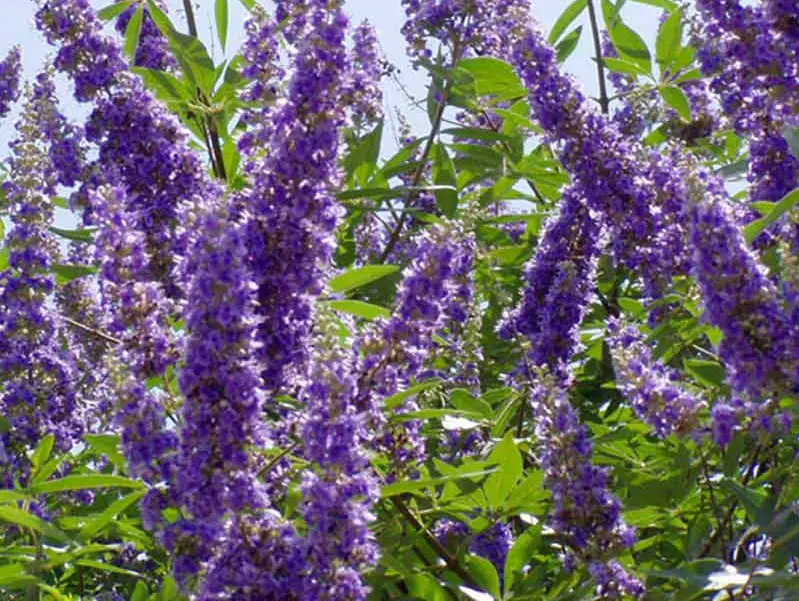
The Vitex Chaste Tree, or Vitex agnus castus, is a versatile and striking addition to any landscape. Hardy in USDA zones 5–9, it reaches 8–15 ft. in height and 5-8 ft. in width. With fragrant lilac blooms from early summer to fall, this tree thrives in full sun and is drought-tolerant. Its vibrant flowers attract wildlife, making it a low-maintenance choice for both ground and container planting.
Bloomerang® Lilac Tree
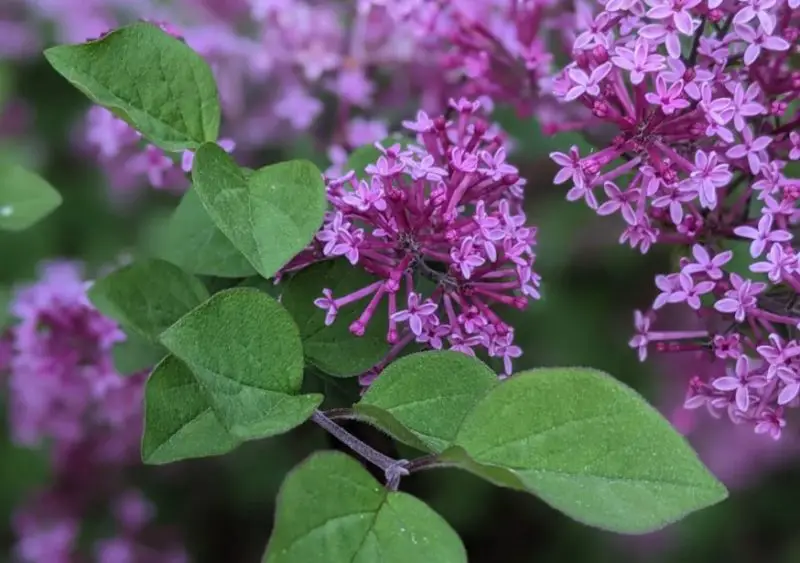
Hardy in USDA zones 3–7, the Bloomerang® Lilac Tree, also known as Syringa ‘SMSJBP7’ PP26549, grows magnificently quickly. It grows to a height of 6-7 feet and a width of 4-5 feet. It blooms twice a year, in mid-May and again in July until the first frost.
It thrives in full light and adds a jasmine-like scent and splash of color to your garden. It’s ideal for patios and poolside plantings. Simple elegance and enduring beauty are guaranteed by its compact design and ease of maintenance.
Leonard Messel Magnolia Tree
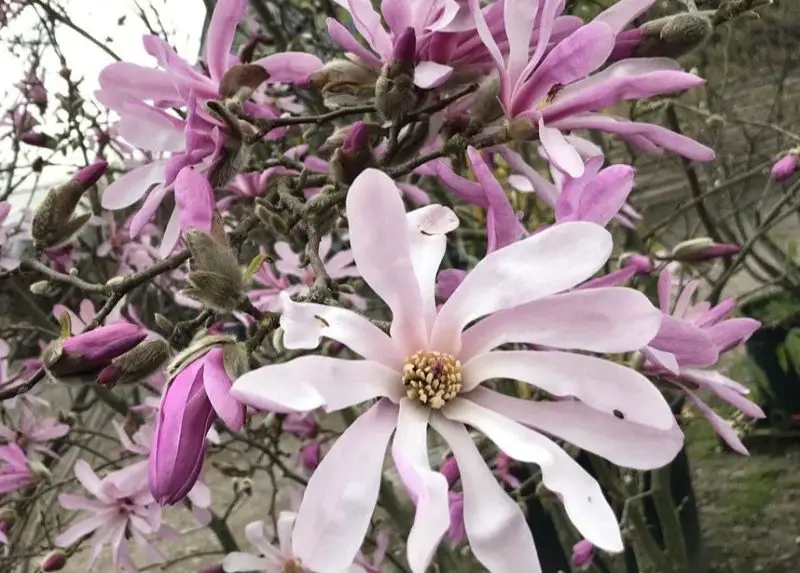
Beautiful purple buds that open to show white interiors and grow to lavender-pink blossoms make the Leonard Messel Magnolia tree (Magnolia x loebneri ‘Leonard Messel’) ideal for modest gardens. This cultivar, which saved late frosts by blooming later than other star magnolias, was given the Royal Horticultural Society’s Award of Garden Merit.
An elegant and fragrant addition to any landscape, it reaches heights of 15-20 feet and widths of 12–18 feet. It thrives in full sun and offers broad adaptability and cold resistance.
Dwarf Korean Lilac Tree
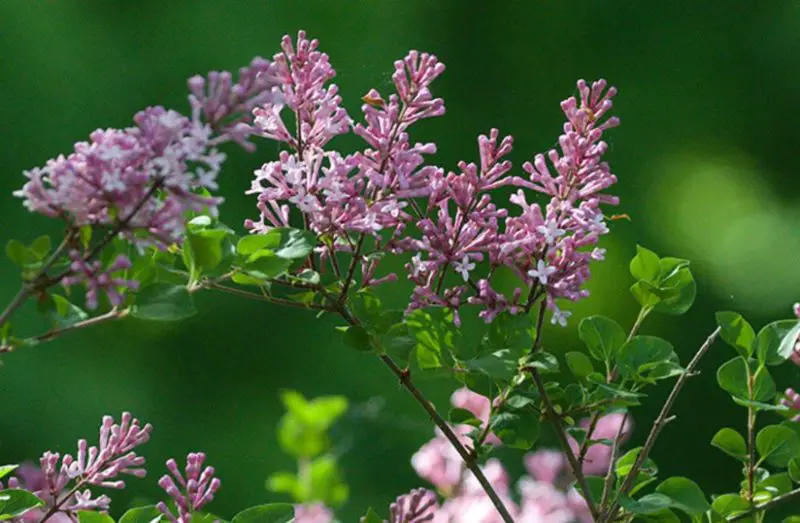
The Dwarf Korean Lilac (Syringa ‘Palibin’) in Tree-Form is perfect for adding spring beauty without taking up much space. This compact lilac tree bursts with fragrant, pale purple blooms each spring, followed by a light rebloom in late summer. With a mature height and width of 5–6 feet., it thrives in full sun and offers dark green foliage that turns colorful in the fall.
Ideal for urban and cold climates, this lilac tree brings height, style, and continuous floral displays to any garden.
Catawba Crape Myrtle Tree
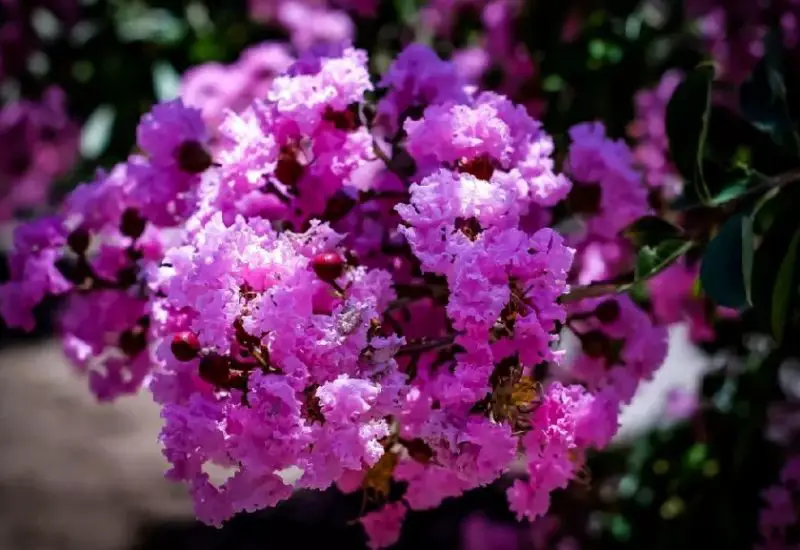
The Catawba Crape Myrtle (Lagerstroemia indica ‘Catawba’) stands out with rich dark purple blooms from spring to fall, creating a striking contrast against its green foliage. This versatile tree reaches a mature height of 10–15 feet and a width of 8–12 feet, thriving in full sun. Beyond its vibrant flowers, it showcases stunning autumn foliage in shades of reddish-bronze, orange, and yellow. Easy to grow and adaptable, the Catawba promises to be a focal point in any landscape.
Ann Magnolia Shrub
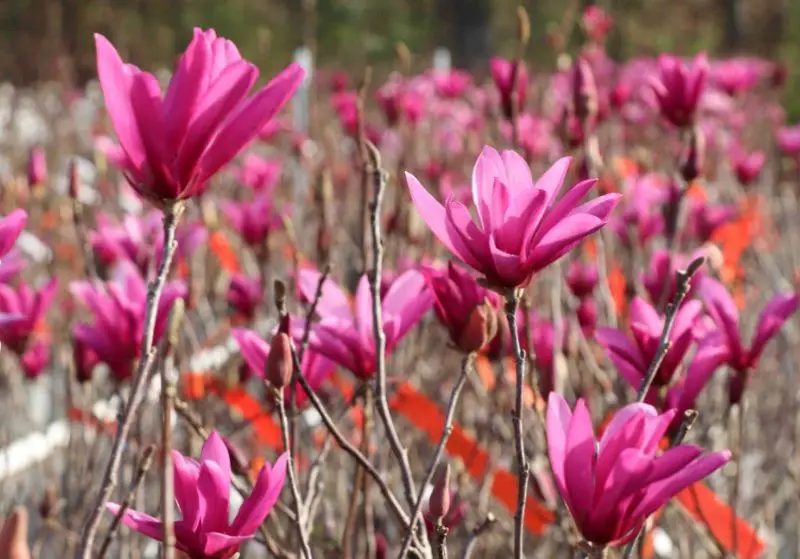
With its lush leaves, the Ann Magnolia (Magnolia x ‘Ann’) is a gorgeous, low-maintenance shrub that looks great in contemporary yards and provides privacy and aesthetic appeal. It avoids spring frosts and produces gorgeous, fragrant purple-red flowers with a white inside that bloom late in the spring and sometimes again in the summer.
This versatile plant grows rather quickly and requires little pruning. It is resistant to pests and diseases. Growing in USDA zones 4–8, it reaches a mature height and width of 8–10 feet, thriving in full sun to light shade.
Twilight Crape Myrtle
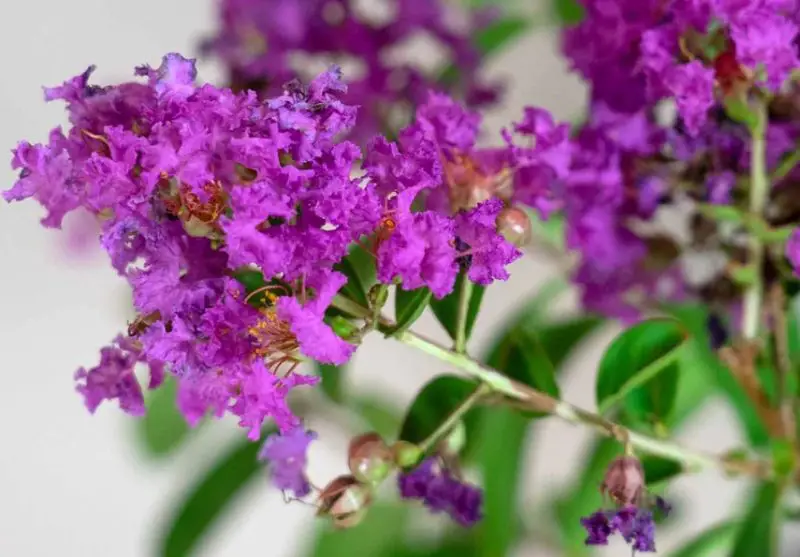
Among crape myrtles, the Twilight Crape Myrtle (Lagerstroemia indica ‘Twilight’) has the deepest purple blossoms, making it a very lovely ornamental tree. Early in June, until frost, it puts on a stunning show of deep purple flowers. It is well-known for its low maintenance and strong drought tolerance.
Reaching heights of 20–25 feet and widths of 10–20 feet, it looks great in a variety of landscape situations. It thrives in direct sunlight and prefers acidic soil; it is incredibly drought-tolerant. USDA zones 7-9 are suitable for the fast-growing Twilight Crape Myrtle tree.
Purple Robe Locust Tree
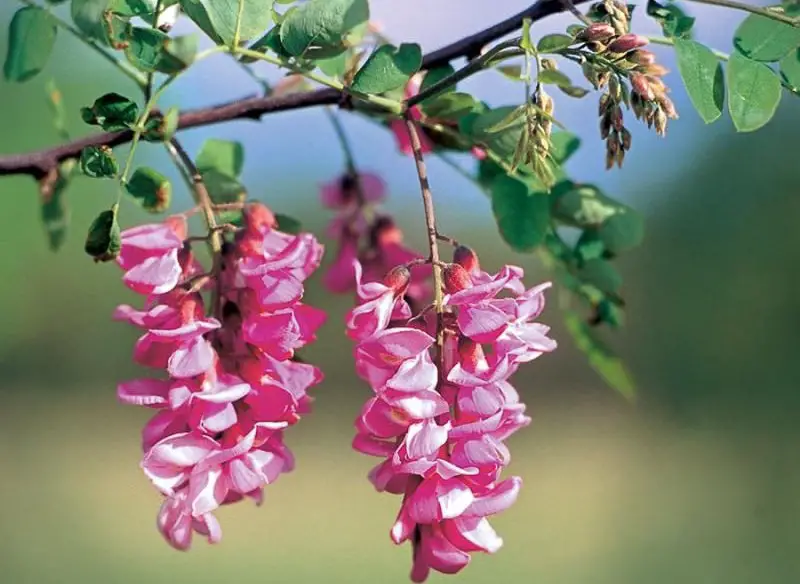
Scientifically named as Robinia pseudoacacia ‘Purple Robe,’ the Purple Robe Locust Tree grows quickly and is prized for its gorgeous clusters of fragrant purple flowers that resemble wisteria. It brings a hint of elegance to any landscape when it blooms in mid-to-late spring.
It thrives in USDA zones 4 through 8, needs little maintenance, and is extremely adaptive and drought-tolerant. Reaching a mature height of thirty to forty feet and a width of twenty to thirty feet, its finely textured leaves offers lovely, light-dappled shade.
Betty Magnolia Shrub
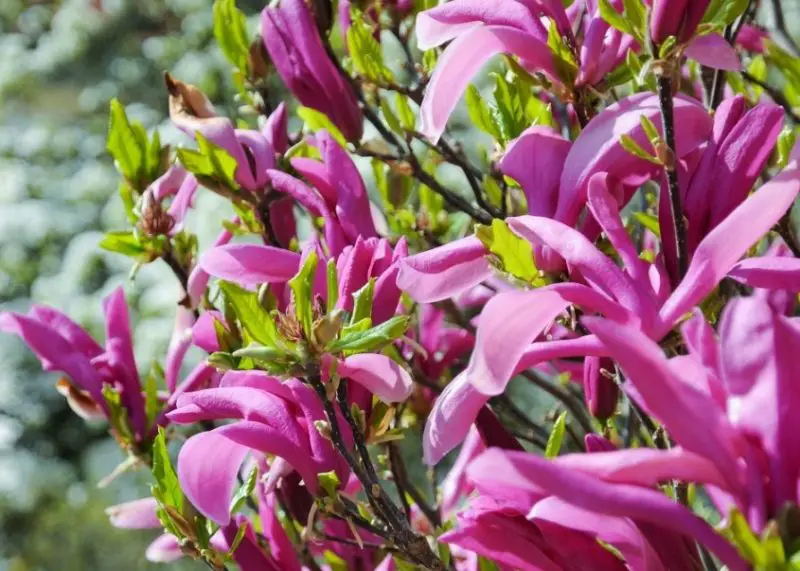
The Betty Magnolia, or Magnolia ‘Betty’ in technical parlance, is a sturdy, compact shrub that grows at a medium pace. When fully grown, it reaches a height of 12–15 feet and a width of 10–12 feet. It thrives in USDA zones 3–8, and in the spring it yields big, fragrant cup-shaped white and purple blooms.
Betty Magnolia is perfect for tiny gardens since it can withstand full sun to partial shade and provides beauty and seclusion without the bulk of larger magnolia varieties.
Shoal Creek Chaste Tree
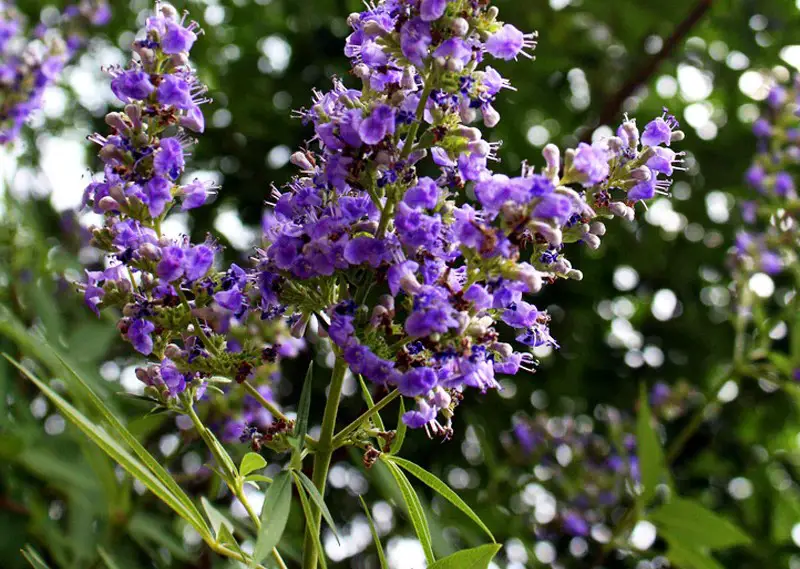
The scientific name for the Shoal Creek Chaste Tree is Vitex agnus-castus ‘Shoal Creek,’ and it grows quickly, flourishing in USDA zones 6 through 9. It grows to a mature height and breadth of 10 to 12 feet, and during the summer it blooms fragrant violet-blue clusters.
It draws pollinators and offers gardeners a sturdy, low-maintenance choice with its elegant shape and fast growth. With its fragrant, silvery blue-green foliage and airy canopy, this heat- and humidity-tolerant tree is a beautiful addition to any landscape.
Don Egolf Chinese Redbud
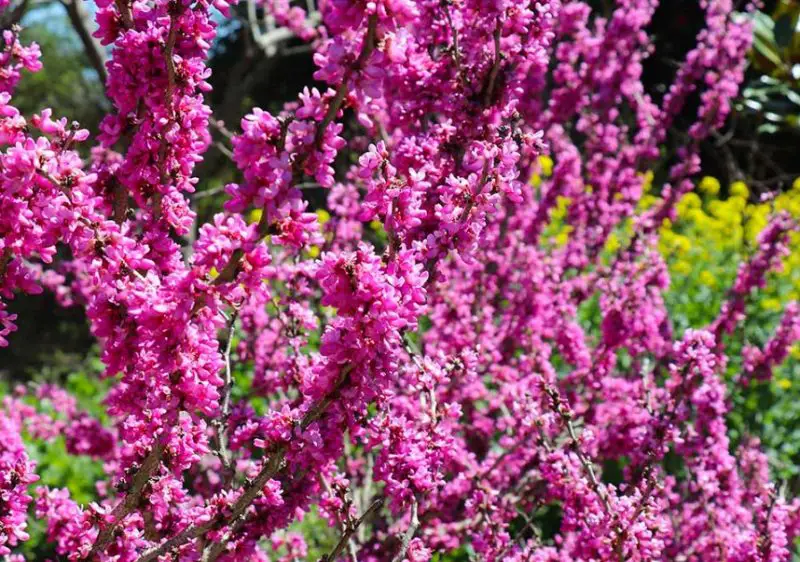
The Don Egolf Chinese Redbud, scientifically known as Cercis chinensis ‘Don Egolf’, is a slow-growing tree suited for USDA zones 6–9. It reaches a mature height of 8–12 ft. and width of 12–15 ft. This award-winning tree features rosy purple flowers covering its branches in early spring.
With its erect, fastigiate branches, it’s perfect for small-space gardens. Notably sterile, it doesn’t produce seed pods, making it tidy and low-maintenance. Its disease resistance and easy-care nature make it highly desirable for landscapes.






